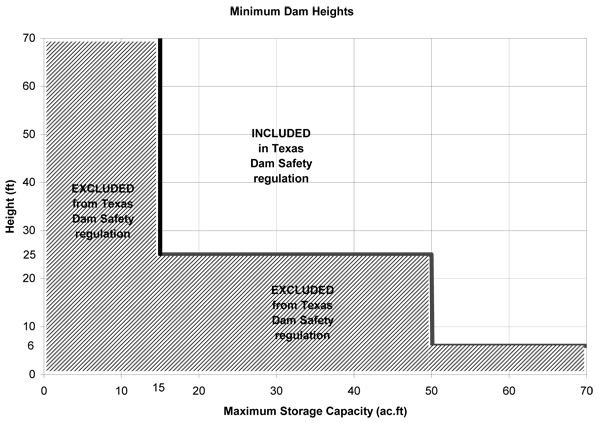Dam Owner Responsibilities
Know Your Texas Dam Safety Laws
Learn Texas Laws
The mission of the Texas Commission on Environmental Quality (TCEQ) is to protect the state’s human and natural resources consistent with sustainable economic development. TCEQ seeks to ensure that regulations are necessary, effective, and current, and apply regulations clearly and consistently. After increased concern about the safety of Texas dams, the TCEQ overhauled dam safety regulations, with the update effective January 1, 2009.
Those regulations are implemented by the TCEQ Dam Safety Program, which monitors and regulates both private and public dams in Texas. The Program periodically inspects dams that pose a high or significant hazard and makes recommendations and reports to dam owners to help them maintain safe facilities. The primary goal of the state’s Dam Safety Program is to reduce the risk to lives and property from the consequences of dam failure.
To help the Program achieve its goal, the state’s dam safety regulations now include the requirement for Emergency Action Plans on all non-exempt Significant-Hazard and High-Hazard Potential dams. Guidelines have been published to help dam owners understand and comply with the EAP requirement.
The EAP mandate is found in Rule 61 of Chapter 299 of Texas Administrative Code Chapter 30. As of October 2013 more than 200 SHP dams have been exempted from further routine inspection and EAP requirements due to recent changes in Texas dam safety law. By definition of their classification, these dams remain a potential threat to human life.
State-Regulated Dams

The Dam Safety program regulations apply to “design, review, and approval of construction plans and specifications; and construction, operation and maintenance, inspection, repair, removal, emergency management, site security, and enforcement of dams that:
- have a height greater than or equal to 25 feet and a maximum storage capacity greater than or equal to 15 acre-feet, as described in paragraph (2) of this subsection;
- have a height greater than 6 feet and a maximum storage capacity greater than or equal to 50 acre-feet;
- are a high- or significant-hazard dam as defined in §299.14 of this title (relating to Hazard Classification Criteria), regardless of height or maximum storage capacity; or
- are used as a pumped storage or terminal storage facility.
This chapter provides the requirements for dams, but does not relieve the owner from meeting the requirements in Texas Water Code (TWC), Chapter 11, and Chapters 213, 295, and 297 of this title (relating to Edwards Aquifer; Water Rights, Procedural; and Water Rights, Substantive; respectively). All applicable requirements in those chapters will still apply.
Dams Not State-Regulated
- dams designed by, constructed under the supervision of, and owned and maintained by federal agencies such as the Corps of Engineers, International Boundary and Water Commission, and the Bureau of Reclamation;
- embankments constructed for roads, highways, and railroads, including low-water crossings, that may temporarily impound floodwater, unless designed to also function as a detention dam;
- dikes or levees designed to prevent inundation by floodwater;
- off-channel impoundments authorized by the commission under TWC, Chapter 26; and
- above-ground water storage tanks (steel, concrete, or plastic).
